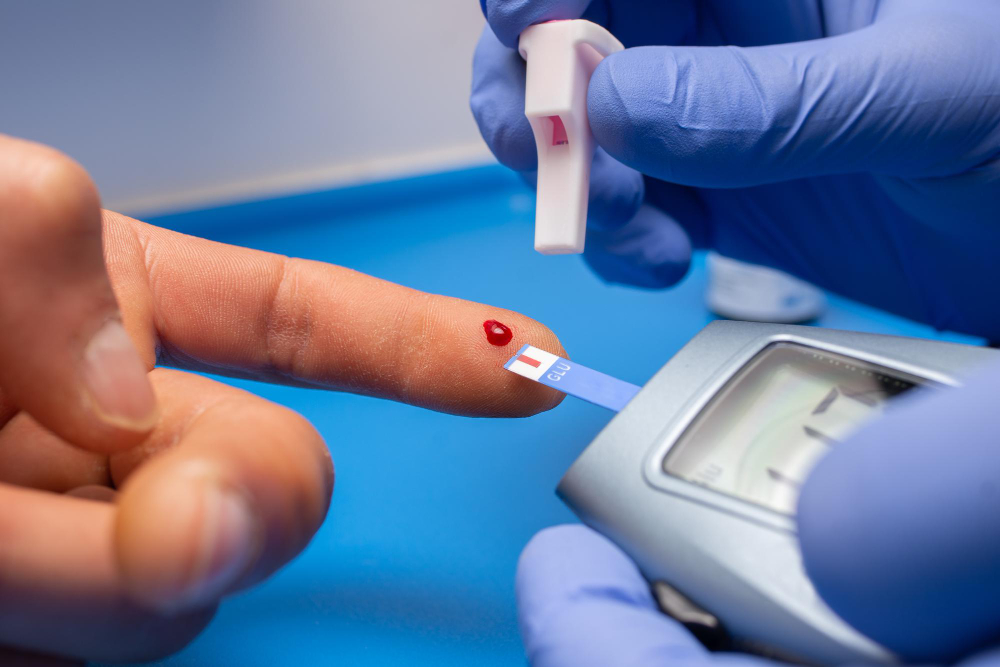Thinking about your first sugar level test? You’re taking a crucial first step towards better health. From understanding why these tests are important to knowing how to prepare, this guide has got you covered. We’ll explore different tests, help you feel at ease, and share how to manage your health moving forward.
1. Why Monitoring Your Sugar Levels is Essential
Diabetes is on the rise worldwide, especially in countries like India. Many people don’t realize they have high blood sugar until it’s too late. Early detection through a sugar level test can make a huge difference. Regular testing helps you keep track and take action before problems arise.
Uncontrolled sugar levels can lead to serious health issues. These risks are not limited to diabetes alone but can also result in complications affecting the heart, kidneys, eyes, and nerves. Knowing your sugar levels means you can take steps to avoid these risks.
There’s also a lot of confusion about blood sugar testing. Many assume the tests are painful and difficult to do. But that’s simply not true. Most tests are quite simple and painless. All you need is a small drop of blood or, in some cases, even just a quick visit to the lab. Testing doesn’t need to be something you dread.
A sugar level test plays a pivotal role in maintaining your health. By understanding your own sugar levels, you become more aware of your body’s needs. This simple routine check can be a lifesaver. It clarifies those unknowns, helps bust myths, and brings peace of mind by letting you know where you stand with your health.
2. Navigating the Different Types of Sugar Level Tests
Knowing the variety of sugar level tests can help you choose what’s best for you. Here’s a quick look at the most common types:
- Fasting Blood Sugar Test: You get this test done after not eating anything for at least 8 hours. It checks your blood glucose levels in a state when you aren’t influenced by recent meals.
- HbA1c Test: This one looks at how your blood sugar has been over the past two to three months. It’s like an average score that shows long-term sugar levels.
- Oral Glucose Tolerance Test: Often used to diagnose diabetes, especially in pregnant women, this test requires you to drink a sugary solution. Then, your blood is tested at intervals to see how efficiently your body processes the sugar.
Each of these tests tells a different part of the story about your glucose levels: – Fasting blood sugar gives you a snapshot of your level at a given time, usually in the morning. – HbA1c tells you how well-controlled your sugar was over a longer period. – The oral glucose tolerance test shows how well your body can handle sugar rise and fall after a meal.
You can take these tests at a clinic or even at home for some types. Clinic tests are more comprehensive and provide a complete analysis. However, at-home tests are convenient if you prefer comfort and privacy. Home kits usually require just a small finger prick.
But remember, at-home testing might limit you to certain types like the glucose random test, which looks at your level at any random time without fasting.
Understanding your options means you can choose the testing method that fits your lifestyle best, ensuring you stay informed about your health in a practical way.
3. Preparing and Experiencing Your Sugar Level Test
Getting ready for a sugar level test is easy when you know what to do. Following a few steps can make the process smooth and stress-free.
- First, check if fasting is required. For some tests, like the fasting blood sugar test, you should stop eating for at least 8 hours before.
- Schedule your test in the morning. It’s easier to fast overnight and head directly to the testing center.
Anxiety is normal, but here’s how you can ease it: – Deep Breathing: Taking a few deep breaths before and during your test can help you relax. – Ask Questions: Don’t hesitate to talk to the healthcare professional about what to expect.
Here’s what usually happens in the clinic: – You’ll sit down and have a small area of your finger or arm cleaned. – A small needle or lancet takes a quick sample of blood.
When testing at home, you’ll use a simple kit: – Clean your hands thoroughly. – Use the lancet provided to prick your fingertip gently. – Place the blood drop on a test strip and insert it into the meter if you use one for instant readings.
The steps are straightforward and over quickly. Knowing what happens helps in managing your expectations and reducing any worries.
4. Beyond the Results: Lifestyle Change and Management
Once you have your test results, understanding what they mean is crucial. Here’s a quick guide: – Normal Range: Your blood sugar is at a healthy level. – Pre-Diabetic: Indicates that you are at higher risk for diabetes but can still make changes to avert it. – Diabetic: You have diabetes, and it’s important to begin managing it immediately.
Living healthier doesn’t need drastic changes but consistent ones: – Diet: Focus on foods that help in managing sugar levels. Traditional Indian foods like dhal and leafy vegetables are great. – Exercise: Regular physical activity helps keep your sugar levels in check and improves overall well-being. – Medication: Only as prescribed by your doctor, if lifestyle changes aren’t enough.
Practical tips for a balanced lifestyle: – Eat smaller, balanced meals throughout the day. – Limit foods high in sugar and saturated fats. – Engage in activities you enjoy, like walking or cycling, for at least 30 minutes a day.
Routine testing keeps you informed about your health dynamics. Acknowledge the results, make needed changes, and see your health improve. Taking control of your sugar levels proactively is empowering.
In conclusion, whether it’s your first time or a routine check-up, a sugar level test isn’t daunting. It’s a step towards staying healthy and informed. Making simple lifestyle adjustments can significantly improve your well-being and minimize health risks. Stay proactive, test regularly, and embrace healthy habits – your body will thank you for it!

